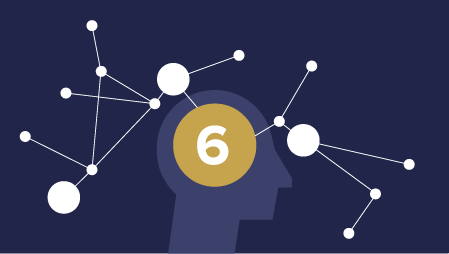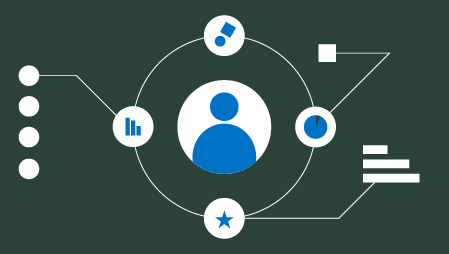Traditional predictive analytics foresaw future events based on comparisons of past scenarios or patterns. This process involves deductive reasoning in order to provide insights into the future. This works well when the collected data samples are highly structured, which is the case in transactional business data.
But what happens when literally unending streams of data are generated from sensor-aided machines or instruments, or from real-time transactions? What about stockpiles of data from social media or mobile messaging? In these cases, traditional analytics tools fail to make predictions as the volume of data is too high for the storage and processing capabilities of available hardware. Plus the variety of non-transactional data, mainly unstructured, do not fit into the framework of RDBMS schemas.
In Intels 2012 survey, participating IT managers responded that though the current business practices engage equal amounts batch and real-time data processing, by 2015, real-time processing will account for two-thirds of the processing workload.
For a long time, predictive analytics has been the exclusive domain of highly secluded statisticians and data scientistswho had no real connection with the everyday world of business. Big data came and changed all that.
Big data tackles the limitations of predictive analytics
Businesses derive value from their vast data sets only after in-depth analysis. In order to successfully conduct analytics, they need appropriate technologies, tools, and infrastructure to capture, store, and retrieve these terabytes of data in high speed, most of which may be unstructured. The big data ecosystem, with its open-source technologies like Hadoop, or the Cloud platform enable the capabilities for fast capture, storage, and retrieval of a variety of data types. Before big data era, many businesses discarded their vast troves of non-transactional data not knowing what to do with it!
Since then, it has been possible to include all non-transactional data like social data, multimedia files, and emails into predictive analytics. In data analytics involving future forecasts or pattern modeling, the more the volume of sample data, the better the insights derived from it. Ergo, big data comes as a source of immense value in the world of predictive analytics. Also the large volumes of semi or unstructured data that was hitherto left out of the ambit of predictive analytics has now become mainstream data for the purposes of insights or future forecasts.
With the big data evolution, businesses are increasingly relying on predictive analytics to build better customer engagements, optimize business processes, and increase operational efficiency. A significant difference between traditional predictive analytics and big data enabled predictive analytics is that in the latter case, inductive reasoning is employed resulting to data discovery. Here, highly sophisticated quantitative tools like machine learning, computational mathematics, neural networks, or artificial intelligence are used for gradual exploration of interrelationships and patterns in analyzed data.
What is more interesting is that smart programming algorithms are enabling ordinary line managers to conduct analytics in real-time from their desktops or mobile devices to make mission critical business decisions.
Applications of big data enabled predictive analytics
Grocery stores routinely conduct predictive analytics on data collected from loyalty cards or historical purchases to determine which items customers are likely to buy in the future. Websites utilize predictive analytics on visitor data to enable a personalized customer experience. In the financial services industry, big data enabled predictive analytics is used to detect fraud, defaulted loans, and new investment opportunities. In the food industry, big data enabled predictive analytics may help identify supply-chain demands for creating, packaging, and shipping time-sensitive products.
Big data has shifted the power of prediction from the ivory tower of data scientists and statisticians into the hands of everyday decision-makers. However, big data is not a threat to data science although such a perception exists.
In How Big Data Brings BI, Predictive Analytics Together, Rita Sallam, Gartners BI analyst says:
However, big data is not about to supplant traditional BI tools. If anything, big data will make BI more valuable and useful to the business. Were always going to need to look at the past and when you have big data, you are going to need to do that even more. BI doesnt go away. It gets enhanced by big data.
The enterprise adoption of big data enabled predictive analytics
As different business functions such as CRM, ERP, or HRM generate more data streams integrated into the existing BI platform in enterprises, the single view of the customer may finally become a reality. In the past, decisions were based on historical data; so by the time the decisions were made, they would outlive their purposes.
As a result of this integrated network of big data analytics, store managers can exploit non-transactional data from their desks to make strategic business decisions about, for example, which inventory items to reduce and which to increase. Now the managers do not need data centers or statisticians to make spot decisions.
Benefits of big data in predictive analytics
- A wide variety of data from different sources can be captured, stored, and processed
- More real-time analytics may be conducted from desktops or mobile devices for spot decisions (mainstreaming of big data)
- Large volumes of non-transactional data can be included in analytics
- The time to solution is significantly shortened
- Future possibility of automation of data modeling steps
In pre-big data era, it took weeks or even months for statisticians or data modelers to build one model. The net result was that the insights these models returned were neither as accurate nor as timely as the big data models available today.



